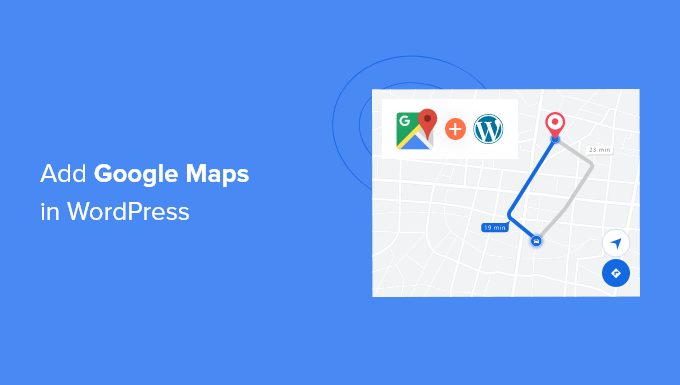Introduction: Why Google Maps and WordPress are a Perfect Match
Integrating Google Maps into your WordPress website can significantly enhance user experience and provide valuable location-based information. Whether you’re running a local business, organizing events, or simply want to showcase locations of interest, embedding a map is a powerful way to engage your audience. This article will guide you through the correct methods for adding Google Maps to your WordPress site, ensuring optimal performance, SEO benefits, and a seamless user experience.
Choosing the Right Method: Plugins vs. Manual Embedding
There are two primary approaches to integrating Google Maps into your WordPress site: using a dedicated plugin or manually embedding the map code. Each method has its own set of advantages and disadvantages, and the best choice for you will depend on your technical skills, specific requirements, and desired level of customization.
Plugins: The User-Friendly Approach
WordPress plugins offer a simple and often code-free way to add Google Maps to your website. These plugins typically provide a user-friendly interface for configuring map settings, such as location, zoom level, markers, and styling. They also handle the technical complexities of embedding the map code, ensuring compatibility with your WordPress theme and avoiding potential conflicts.
Benefits of Using Google Maps Plugins:
- Easy to use, even for beginners
- No coding knowledge required
- Offer a wide range of customization options
- Automatic updates and compatibility with WordPress core
Popular Google Maps Plugins for WordPress:
- WP Google Maps
- Maps Marker Pro
- Advanced Google Maps Plugin
Manual Embedding: For Greater Control
Manually embedding Google Maps involves obtaining the embed code from Google Maps and pasting it directly into your WordPress page or post. This method provides greater control over the map’s appearance and behavior, but it also requires some basic understanding of HTML and JavaScript.
Advantages of Manual Embedding:
- Full control over the map’s code
- Option to customize the map beyond plugin limitations
- Potential for better performance if implemented correctly
Step-by-Step Guide: Adding Google Maps Using a Plugin
This section provides a detailed guide on how to add Google Maps to your WordPress website using a plugin. We’ll use WP Google Maps as an example, but the general steps are similar for most Google Maps plugins.
- Install and Activate the Plugin:
Go to your WordPress dashboard, navigate to “Plugins” > “Add New,” search for “WP Google Maps,” install the plugin, and activate it. - Configure the Plugin Settings:
Once activated, you’ll find a new “Maps” menu in your WordPress dashboard. Click on “Settings” to configure the plugin’s general settings, such as your Google Maps API key (more on this later) and default map options. - Create a New Map:
Go to “Maps” > “Add New Map” to create a new map. Give your map a title and configure the map’s settings, such as:- Location: Enter the address or coordinates for the map’s center point.
- Zoom Level: Adjust the zoom level to show the desired area.
- Map Type: Choose between roadmap, satellite, hybrid, or terrain map types.
- Markers: Add markers to highlight specific locations on the map. You can customize the marker icon, title, and description.
- Appearance: Customize the map’s appearance, such as the map theme, controls, and info window styling.
- Embed the Map into Your Page or Post:
Once you’ve configured the map, the plugin will generate a shortcode. Copy the shortcode and paste it into the page or post where you want the map to appear. - Preview and Publish:
Preview your page or post to see the embedded map. Adjust the map’s settings as needed and then publish your page or post.
Step-by-Step Guide: Manually Embedding Google Maps
This section outlines the steps for manually embedding a Google Maps using the embed code provided by Google Maps.
- Generate the Embed Code from Google Maps:
Go to Google Maps (maps.google.com) and search for the location you want to embed. Click on the “Share” button below the location name. In the share dialog, select the “Embed a map” tab. Customize the map size (small, medium, large, or custom size) and then copy the HTML embed code. - Paste the Embed Code into Your WordPress Page or Post:
In your WordPress editor, switch to the “Text” or “Code” mode (not the “Visual” mode). Paste the copied HTML embed code into the desired location in your page or post. - Customize the Map Size (Optional):
The embed code includes an `

